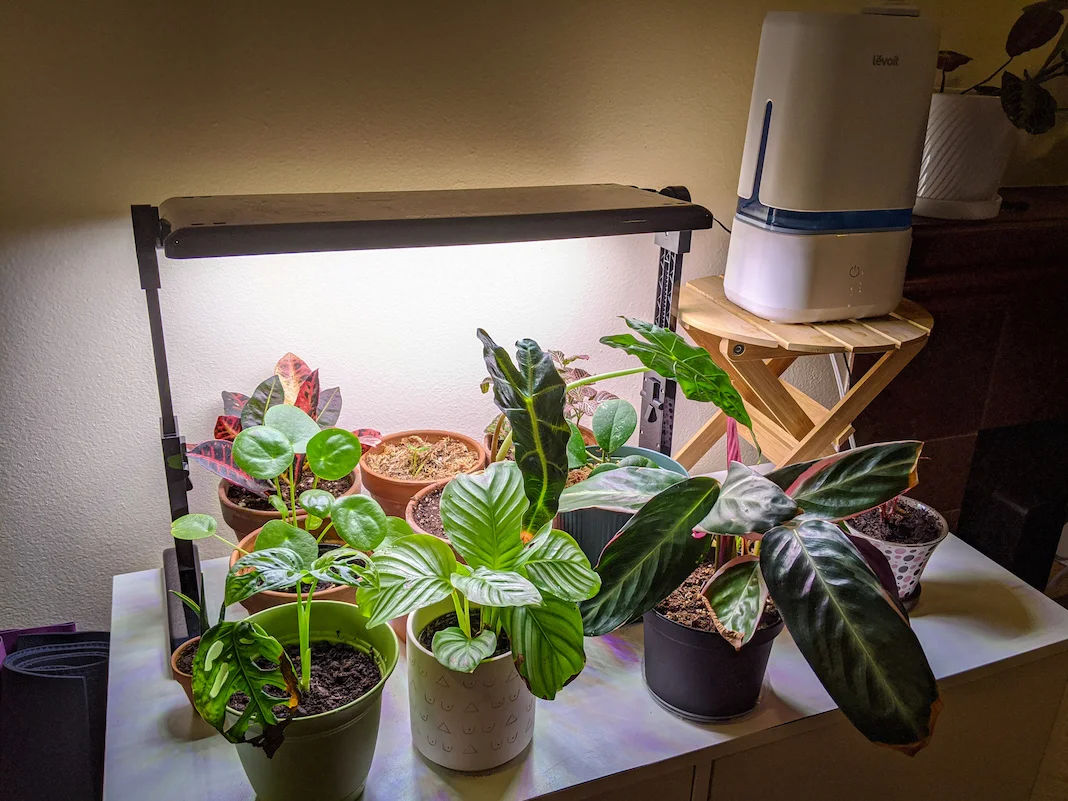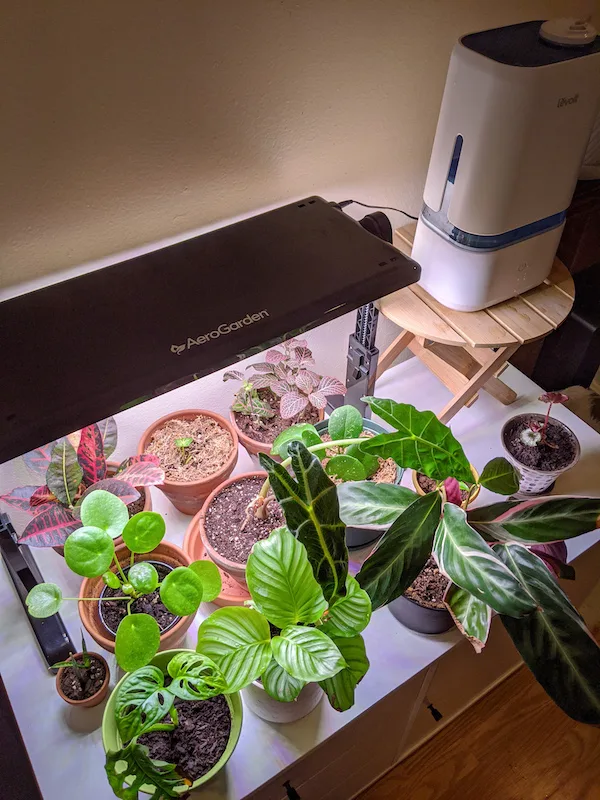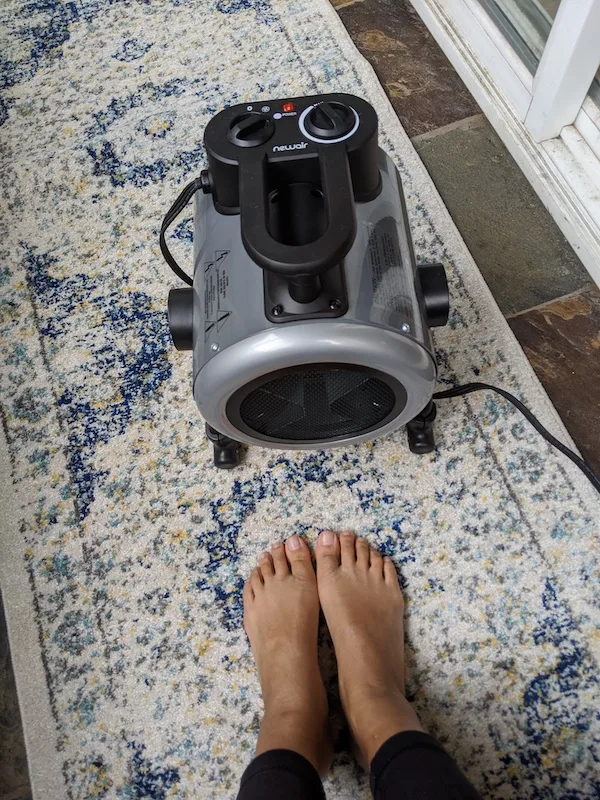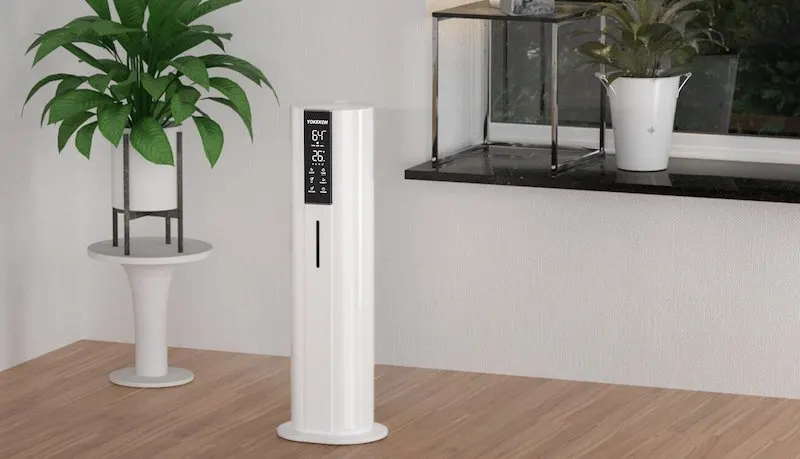Updated: 10/18/2020 | How to Keep Your Indoor Plants Alive
Winter can be the most challenging time of the year for indoor plants. Light levels are typically at their lowest, the days are short, and having the heat on sucks the humidity out of the air. And if your holiday schedule is busy, houseplants can easily be overlooked.
Luckily, house plants are easy to grow, even during the Fall and Winter seasons.
If you’re a new plant parent, you may want to check out our recommended plants for beginners. These low maintenance plants are a sure bet for people who are just starting to create their indoor jungles.
For those who cannot turn back from their fussy plants, here are our best practices for keeping your plants alive and thriving during the Wintertime.
How to Keep Your Indoor Plants Alive In the Winter
#1 Give them Light!
Plants need light more than anything else in the Fall and Winter.
In Fall and Winter, the sun sets earlier, especially if you live further from the equator. The sun is also lower in the sky and can often be covered by clouds.
To ensure your indoor plants are getting enough light during this time of year, you should move them closer to the window and rotate them regularly so that they get the sunlight they need.
Another option is to give them some supplemental artificial lighting, such as a grow light. If the amount of natural sunlight isn’t enough, shine a full-spectrum LED grow light for at least 12-14 hours a day on your plants.
We recommend two types of grow lights:
- A LED grow light panel that sits on a table and can be pivoted to direct light towards your plants. We like this 45 Watt grow light from Aerogarden ($124.95).
- A hanging LED grow light like the Aspect from Soltech Solutions ($149-$199). Use code SCHIMIGGY for 15% off. Shop now>>
If you’re on a tight budget, a simple 7W LED Grow lightbulb ($12) in an adjustable table lamp will also work.
We highly recommend using a smart plug to control when your grow lights turn on and off. We set ours to turn on at 5 AM and off at 5 PM. It’s a lifesaver because we would definitely forget to turn it on during our busy work days.
We also recommend getting a light reader so that you can gauge how much natural light you’re actually receiving and how much artificial light you will need to supplement for your plants.
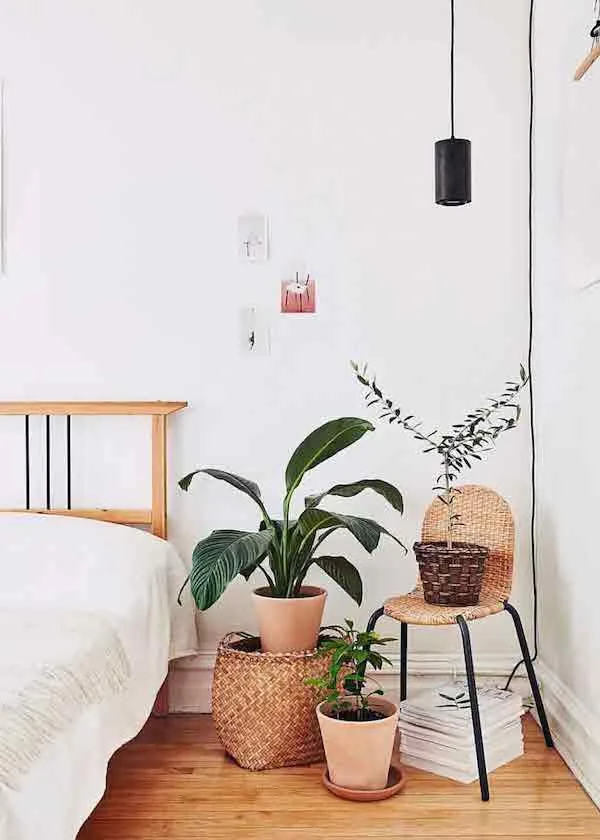
#2 Reduce Watering
From October to February, a majority of plants tend to go into a state of dormancy or semi-dormancy. On days with less sun and colder temperatures, plants will process water and light more slowly. During their dormant seasons, plants do not require as much water or fertilizer.
Plants only take up as much water as the amount of sunlight they receive. We recommend waiting longer between waterings or reducing the amount of water used with each watering. Never leave your soil damp and allow the soil to completely dry out in between waterings to avoid root rot.
A great rule of thumb is to only water your plants when the soil is dry 1 to 2 inches below the surface. Simply check moisture levels by sticking your finger into the surface of the soil until you feel where it is still damp.
Do not leave your plants sitting in water because this can lead to problems such as root rot, mold, fungus, and other issues. If you see yellow leaves or moldy soil, reduce your watering frequency.
#3 Stabilize Temperatures
Plants don’t like extreme changes in temperature. It’s important to keep them away from cold windows, fireplaces, heating vents, or radiators.
Keep your plants at a stable temperature between 65°F and 75°F during the day, and above 50°F at night. Anything below 50°F and your plants may start to suffer.
If you live in a really cold climate, we recommend using a space heater to keep your indoor space warm. We use our Newair Garage Space Heater to keep our plants from freezing during the Fall and Winter seasons. It’s located in our patio deck which often gets colder than the rest of the house.
We also recommend gauging the temperature of your space by using a room thermometer. We use this thermometer that also measures humidity with a smartphone app.
#4 Increase the Humidity
Plants LOVE humidity. Most plants thrive with levels of from 50 to 60 percent humidity. During winter, humidity levels can go below 35 percent.
A sign of your plant not getting enough humidity are the browning of the tips and edges of the leaves.
To prevent this, we recommend getting a desktop humidifier and directly aim moisture towards your plants. Read about the different types of humidifiers and their benefits.
We also recommend getting a ThermoPro humidity reader so that you can take action to regulate the humidity levels for your plants.
Here are a few other ways to bring more humidity to your plants:
- Place a humidifier near your plants.
- Our favorite humidifier is this one by Levoit which works for up to 40 hours!
- If you’re gone for a longer time period, we recommend getting a large humidifier like these from Keecoon. Use code SCHIMIGGY for 5% off all your orders at Keecoon.
- Taotronics also sells various desk and standing humidifiers that we highly recommend.
- Cluster your plants together so that they keep one another moisturized. Plants release moisture into the air as they breathe.
- Place the plant on a humidity tray of 2″ tall pebbles and water. The planter should sit on top of the pebbles and above the water level. As the water evaporates, it will create humidity around the plant.
#5 Dust Them Off
Shut windows during the Fall and Winter months can make your indoor space stuffy and dusty. Plants should be dusted regularly so that they can efficiently absorb sunlight AND efficiently release moisture into the atmosphere. Dust build-up on plants will reduce their ability to absorb light and can potentially kill them.
Make a habit of dusting every 2-3 weeks. Use a damp towel to wipe down sturdy plants such as a Fiddle Leaf Fig or Dieffenbachia.
For more sensitive plants, use a spray bottle to give your pants a “bath” and watch the dust drip off the leaves. You may want to collect any droplets with a towel or bucket if you have wooden flooring.
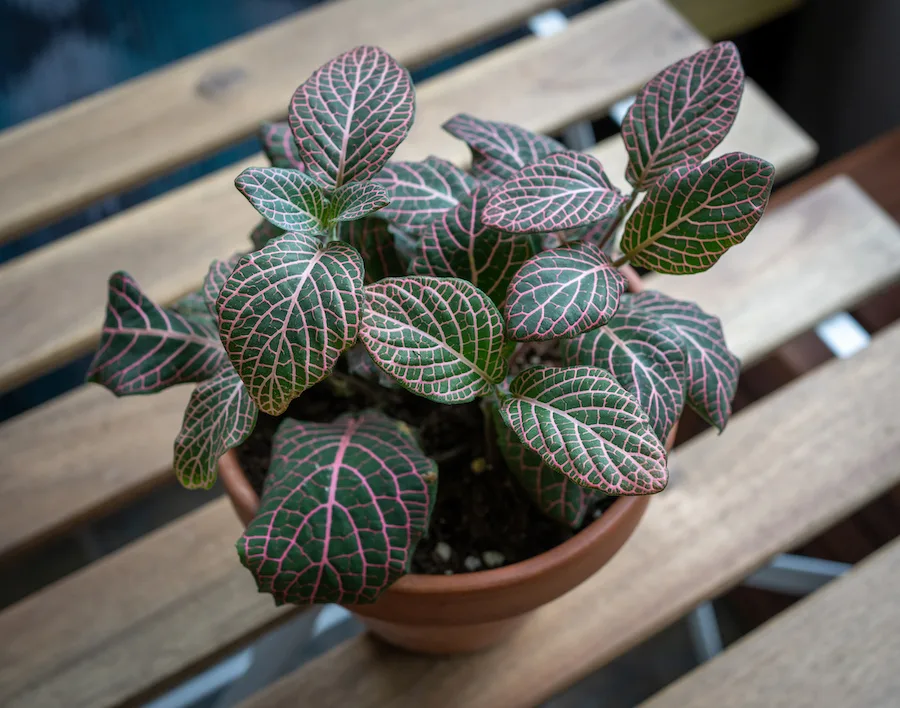
Nerve or Mosaic Plant (Fittonia Albivenis)
#6 Don’t Fertilize
Most houseplants don’t need any fertilizer during winter. They grow a lot more slowly and thus don’t really need the extra nutrients until the days start to get longer in spring.
We typically resume fertilizing in early March when the sun returns.
#7 Vacation Care
If you travel during the holidays and will be gone for more than a week, get a plant sitter to watch over your plants. Make sure you leave clear instructions on how to care for your plants.
Another option is to set your plants in the bathtub. Keep their soil damp and place them all together in that more humid environment until you return. This trick has saved my plants while I am gone for long periods of time.
Another trick is to keep all your plants in the same area. Plants give off moisture and can help keep one another alive while you are gone.
Have plant questions?
We love to talk to other plant parents. Email us your houseplant questions we’ll get back to you ASAP! 🙂
If you enjoyed our post on how to keep your indoor plants alive, please share it on Pinterest! Thank you!
Thank you for visiting today! If you found this encouraging or informative, please connect with us on Instagram or TikTok. Sign up for our monthly newsletter for updates and more. We promise we won't spam you! Feel free to unsubscribe anytime. If you're a brand and want to work with us, please visit this page to get in touch.

